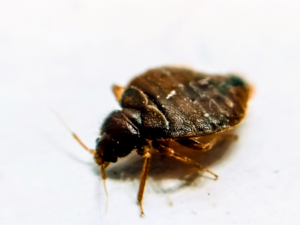Home / Blog / What are Yellow Jackets?
What are Yellow Jackets?

Scientifically reviewed by Daniel Baldwin, BCE, CCFS, CP-FS
-Published on August 2, 2022
-Updated on March 10, 2025
Similar to bees, yellow jackets have yellow and black coloring and are important pollinators, despite their vicious sting. However, yellow jackets eat other insects in addition to nectar, which is a marked difference from honey bees—who are not carnivorous and are completely satisfied with nectar. Learn even more about yellow jackets, if they’re dangerous, and how to get rid of them from your home and property.
What Are Yellow Jackets?
Yellow jackets are considered a type of wasp. Like wasps, they build nests and can sting. They also live in colonies with other yellow jackets, working together to find food and support their queen. Their appearance is very similar to some bees or hornets, including coloring, antennae, and transparent wings, which is why it can be very difficult to tell them apart. The biggest difference between yellow jackets and hornets, though, is head size—a hornet’s head is significantly bigger than that of the yellow jacket.
The type of wasp most similar to a yellow jacket is a paper wasp. They have similar coloring and sizing, but paper wasps are slightly more slender while yellow jackets have thicker bodies. Paper wasps also have orange antennae. Yellow jackets can be more aggressive than paper wasps though.

How Long Do Yellow Jackets Live?
LIke other similar insects, yellow jacket queens live longer than the workers (almost a year longer). Workers tend to live around 22 days. This hierarchical system works because the workers produce food for the colony while the queens eat the food and live longer in order to lay more eggs and produce more workers.
Peak season for yellow jackets is in late summer and early fall when their populations are highest. This is also the time of year when they sting humans most because they need food and they enjoy eating what humans are eating too (sugary foods and drinks). That’s why you’ll see yellow jackets landing on your soda can.
Are Yellow Jackets Dangerous?
Since they are stinging insects, yellow jackets can inflict painful stings and may cause allergic reactions in people and pets. Unless you are allergic to bee, wasp, or yellow jacket stings, hydrocortisone cream or ice should help soothe any sting sites.
If a yellow jacket lands on you, don’t panic. Because these insects get aggressive when they feel threatened, especially when they are looking for food, it’s best to stand still and let the yellow jacket fly away when it’s ready. You can also slowly brush it away, but don’t swat at it.
If you disturb a yellow jacket nest, slowly walk away with both hands covering your face. Any sudden movements will attract more yellow jackets.
Yellow jackets also bring the risk of bio-contamination due to their habit of poking around in landfills. This means some yellow jacket stings could carry harmful bacteria that can be injected into your blood.
If you get stung by a yellow jacket, keep a lookout for the following symptoms:
- Redness
- Swelling
- Hives
- Pain
- Itching
- Coughing
- Nausea
If you are experiencing any of these more serious symptoms, it’s best to contact your physician.

How To Get Rid of Yellow Jackets
Yellow jackets are actually beneficial to the environment because they act as natural pest control and eat caterpillars and harmful flies that may ruin vegetation or gardens. There are some easy steps you can take to address a yellow jacket infestation in your yard or around your home. They include:
- Eliminating food sources by throwing away garbage and not letting it sit too long (yellow jackets love to find food within trash)
- Setting traps that are appropriate for the yellow jackets in your area
- Dangling small pieces of meat or fish above a mixture of water and detergent to draw in yellow jackets and trap them
Of course, it may be best to call a pest control professional to help you deal with your yellow jacket infestation, especially so you can avoid any painful or potentially harmful stings. Although yellow jackets may look a lot like bees or wasps, there is a specific kind of treatment for these insects, so it’s best to consult with a professional to address the root of the problem and keep yellow jackets away from your yard and home.
Related Articles
Visit our blog to learn more.
→





